blog
BOOK REVIEW: Steel Town by Stephen Shore
Stephen Shore is considered one of the most significant photographers of our time. Having approached photography at the age of only six, then influenced by the work of Walker Evans, he managed to attract attention to himself at the age of fourteen, when his work was purchased by Edward Steichen for the collection of the Museum of Modern Art of New York (MoMA). In the second half of the 1960s, Shore worked in Andy Warhol’s Factory, opening up to experimentation in the search for his own style in documentation photography. In 1971 he was the first living photographer in history to whom a solo exhibition was dedicated at the Metropolitan Museum of Art in New York.
From 1972 to 1981 he undertook several trips through the United States aimed at investigating the impact of the American system on everyday life and on the ordinary and urban landscape. Two of the fundamental books for photography of all time were born: “American Surfaces” and “Uncommon Places”. Shore became a pioneer figure in the movement known as New Topographics, whose adherents (Baltz, Schott, Benrd, and Hilla Becher, and others) proposed a different, more detached and less spectacular approach to landscape representation.
Overall, he has had dozens of exhibitions, numerous academic collaborations and more than 40 publications and, in 2017, the Museum of Modern Art organized a big retrospective exhibition of his work.
Shore’s fundamental intuitions were two: breaking with an art that enhanced the beauty of nature to seek aesthetics in the ordinary, in everyday life and the use of color in an era when color photography was relegated only to commercial purposes. This is why he can be considered one of the founders of modern color photography.
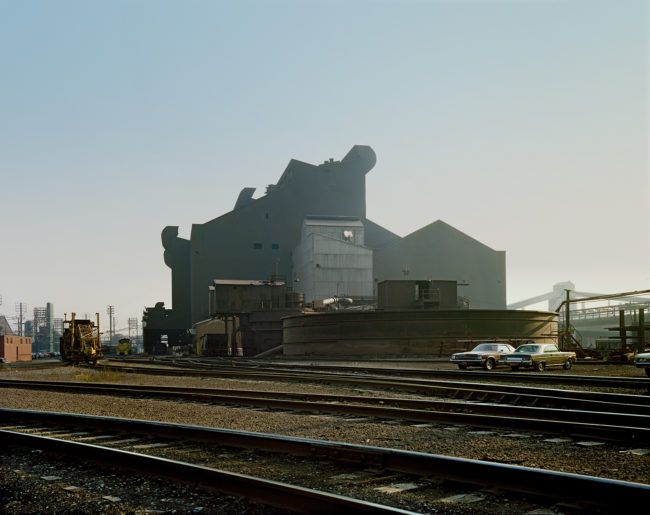
Stephen Shore, image from Steel Town (MACK, 2021). Courtesy the artist and MACK.
Steel Town is a work commissioned by Fortune Magazine, for whom Shore traveled through New York, Pennsylvania and Ohio in 1977. Until the seventies that area, including also West Virginia, Illinois, Michigan, and parts of Iowa, Minnesota and Indiana, was the core of the steel industry. This part of America is today known as the Rust Belt. As the name might imply the area, due to the industrial decline it has undergone, has sort of turned to “rust”, like what happens to old steel.
Much of this decrease in industry is because the United States began using manufacturers from other countries. But the crisis of the American steel industry was something deeper, because it marked the interruption of an economic growth that had lasted for decades and which, for years, has brought a growing condition of welfare to the American people. This crisis was not just an economic crisis, but a tearing apart of the American dream of prosperity and continued growth.
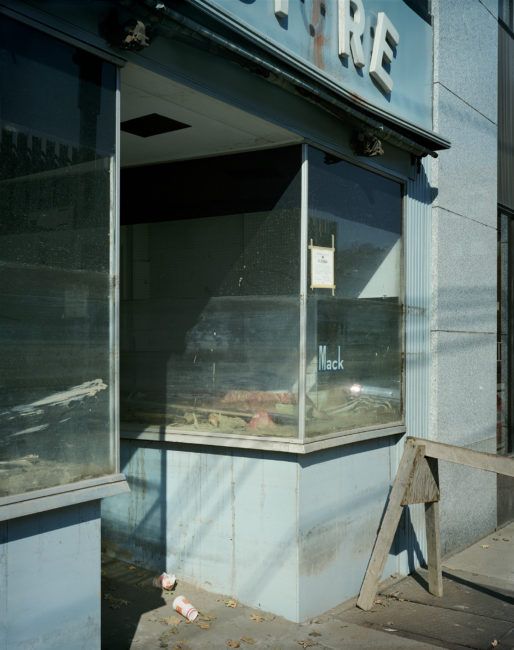
Stephen Shore, image from Steel Town (MACK, 2021). Courtesy the artist and MACK.
In Steel Town the photographer shows us vacant houses, abandoned premises (whose occupants probably had to leave in search of a new job), and people demonstrating. There are questioning glances addressed directly to the steel mills that are always captured without any kind of dynamism, without any detail that refers to noises or the presence of the workers. The manufacturing buildings are photographed in an ordered geometric context that makes them further isolated and accentuates their symbolic value. The steel mill transforms into a monument in memory, into a totem pole.
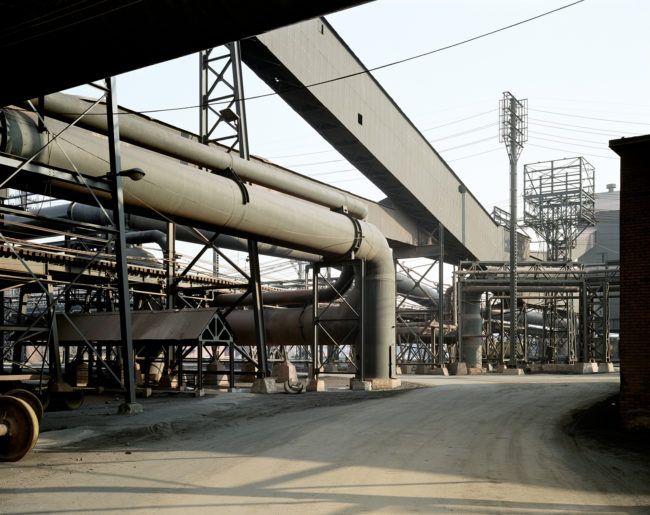
Stephen Shore, image from Steel Town (MACK, 2021). Courtesy the artist and MACK.
Throughout the work, there is an uncertainty about the politics of Jimmy Carter, a Democrat, who ignored the cry for help of the steel workers who then, disappointed, turned their attention to Ronald Reagan. There are also photographs that look like a neorealist and grotesque reinterpretation of those beautiful images of a positive and optimistic presentation of the economic boom society, where everything is beautiful and abundant, where everything will be fine forever.
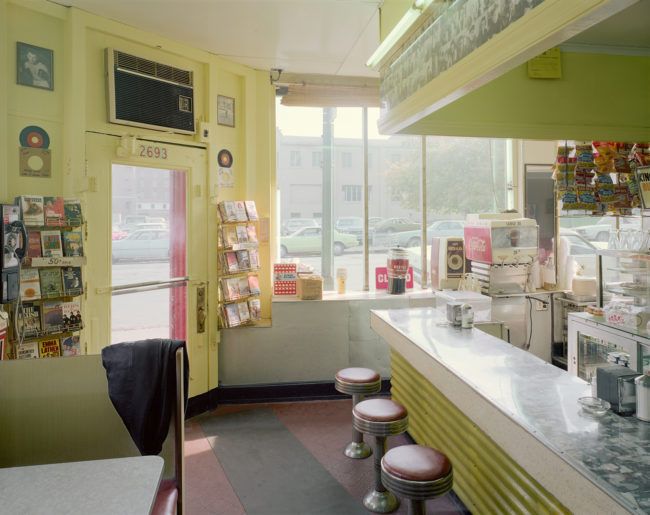
Stephen Shore, image from Steel Town (MACK, 2021). Courtesy the artist and MACK.
Steel Town gives us an atmosphere of general suspension and reveals a Stephen Shore who, unlike in his other projects, abandons his position as a neutral observer (which has always characterized the aesthetics of his photography) to move to an emotional engagement. The portraits in the book clearly show the artist’s emotional closeness and solidarity towards the workers and their condition of discomfort, of concern for a future that is also that of American society.

Stephen Shore, image from Steel Town (MACK, 2021). Courtesy the artist and MACK.
The Mack publishing house took over the entire Shore archive (as it did for the archives of other authors, not least the Italian Luigi Ghirri, whom I love): this work, done in an excellent way, gives us the opportunity to get to know the author better. In this sense, Mack hit the target, all the more so because Shore’s production is as boundless as it is unknown. And a work of this kind, on this subject and which directly involved the photographer forcing him to abandon his position as a neutral observer, had never been published by Shore.
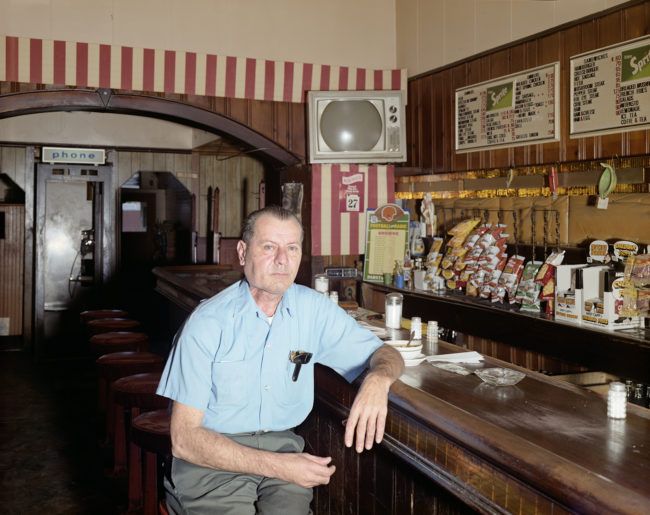
Stephen Shore, image from Steel Town (MACK, 2021). Courtesy the artist and MACK.
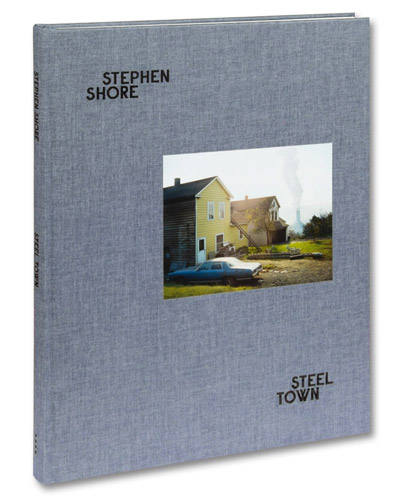
Steel Town (2021)
by Stephen Shore
published by MACK
www.mackbooks.co.uk
Location: Online Type: Book Review, Documentary
Events by Location
Post Categories
Tags
- Abstract
- Alternative process
- Architecture
- Artist Talk
- artistic residency
- Biennial
- Black and White
- Book Fair
- Car culture
- Charity
- Childhood
- Children
- Cities
- Collaboration
- Community
- Cyanotype
- Documentary
- Environment
- Event
- Exhibition
- Faith
- Family
- Fashion
- Festival
- Film Review
- Food
- Friendship
- FStop20th
- Gender
- Gun Culture
- Habitat
- Hom
- home
- journal
- Landscapes
- Lecture
- Love
- Masculinity
- Mental Health
- Migration
- Museums
- Music
- Nature
- Night
- nuclear
- p
- photographic residency
- Photomontage
- Plants
- Podcast
- Portraits
- Prairies
- Religion
- River
- Still Life
- Street Photography
- Tourism
- UFO
- Water
- Zine

Leave a Reply